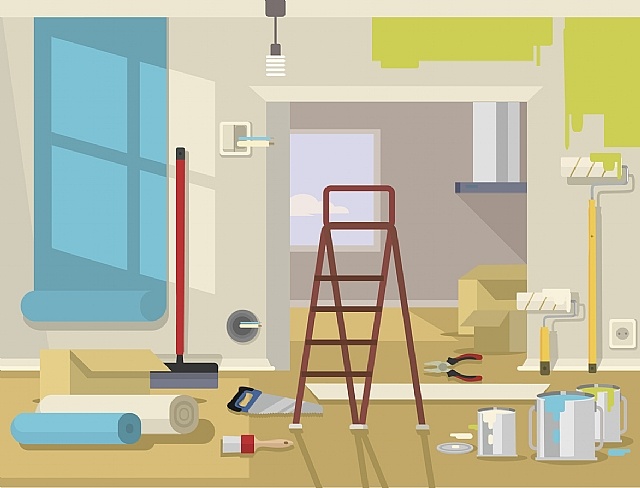Mesmerized By The Thought Of Enhancing Your Home Through Shade? Uncover Vital Actions To Craft A Well Balanced Shade Palette That Showcases Your Distinct Taste
Mesmerized By The Thought Of Enhancing Your Home Through Shade? Uncover Vital Actions To Craft A Well Balanced Shade Palette That Showcases Your Distinct Taste
Blog Article
Created By-Lake Adcock
When starting a home renovation project, the option of color palette can dramatically influence the total ambiance and visual appeals of your space. The process of choosing the perfect colors includes a thoughtful evaluation of different variables, from the area's natural lights conditions to its existing style elements. By understanding exactly how different colors communicate and affect state of minds, you can craft a harmonious environment that shows your design and character. Keep tuned to uncover the crucial steps in creating a shade combination that transforms your home into a sanctuary of visual joy.
Recognizing Shade Concept
In the world of home restoration, a vital element to take into consideration is comprehending color theory. Shade concept plays a critical function in developing a natural and aesthetically enticing space. It includes the research study of just how colors communicate with each other and exactly how they can stimulate different emotions and moods. By realizing the fundamentals of color concept, property owners can make educated choices when selecting paint shades, furnishings, decoration, and accessories for their space.
Read More Listed here in color concept is the color wheel, which includes primary colors (red, blue, yellow), secondary colors (orange, environment-friendly, purple), and tertiary shades (mixtures of main and secondary colors). Understanding the partnerships in between these colors can aid in developing unified color schemes.
As an example, complementary colors (opposite each other on the color wheel) can produce a vibrant contrast, while analogous colors (next to each other on the shade wheel) can provide a feeling of unity and communication.
Assessing Your Space
Having realized the basics of shade theory and the relevance it holds in producing visually attractive spaces, the following action in the procedure of restoring your home entails evaluating your space.
Before picking a shade scheme, it is essential to think about the size, layout, lighting, and existing decoration of each space. Review the all-natural light that enters the space throughout the day, as it can affect exactly how colors show up. Darker tones may make a room feel cozier yet can likewise make it appear smaller, while lighter tones can produce a sense of airiness and visibility.
Additionally, evaluate the space's feature and the mood you intend to produce. For https://augustkvdmu.azzablog.com/33162034/refer-to-this-all-encompassing-checklist-to-make-sure-a-remarkable-kitchen-area-renovation-confirming-that-every-key-action-is-taken-into-consideration-your-envisioned-kitchen-area-is-awaiting-you , soothing blues and greens are ideal for bedrooms, while dynamic yellows and oranges can invigorate a work space.
Remember of any kind of building features or focal points that you wish to highlight or downplay. By extensively assessing your area, you can make informed decisions when picking the perfect shade combination for your home restoration.
Selecting the Right Color Styles
When it pertains to selecting the ideal colors for your home improvement, the crucial hinge on comprehending the effect different shades can carry a room. Shades can stimulate various feelings and set the tone for the entire space.
Warm tones like reds, oranges, and yellows create a comfy and inviting ambience, perfect for living spaces or dining locations. On the other hand, trendy tones such as blues, environment-friendlies, and purples promote relaxation and serenity, making them suitable for rooms or restrooms.
Neutral colors like whites, grays, and off-whites supply a timeless and flexible background that can be paired with bolder accents or transformed conveniently gradually.
Think about the all-natural light in your space when selecting shades, as it can significantly influence how a color appears. Darker tones might soak up light, making an area really feel smaller sized, while lighter tones can reflect light and produce an airy feeling.
Do not hesitate to test paint samples on your walls before committing to a shade to see exactly how they search in different lighting throughout the day. Eventually, selecting the right colors is about developing an unified and visually attractive environment that fits your personal design and boosts the capability of each area.
Conclusion
In conclusion, choosing the ideal color combination for your home improvement involves thinking about aspects such as dimension, design, illumination, and existing design. Understanding shade theory and the feelings different shades stimulate can aid create the wanted atmosphere in each area. By very carefully assessing your space and choosing the appropriate shades to highlight or minimize features, you can achieve an unified and educated layout that boosts the general aesthetic of your home.
